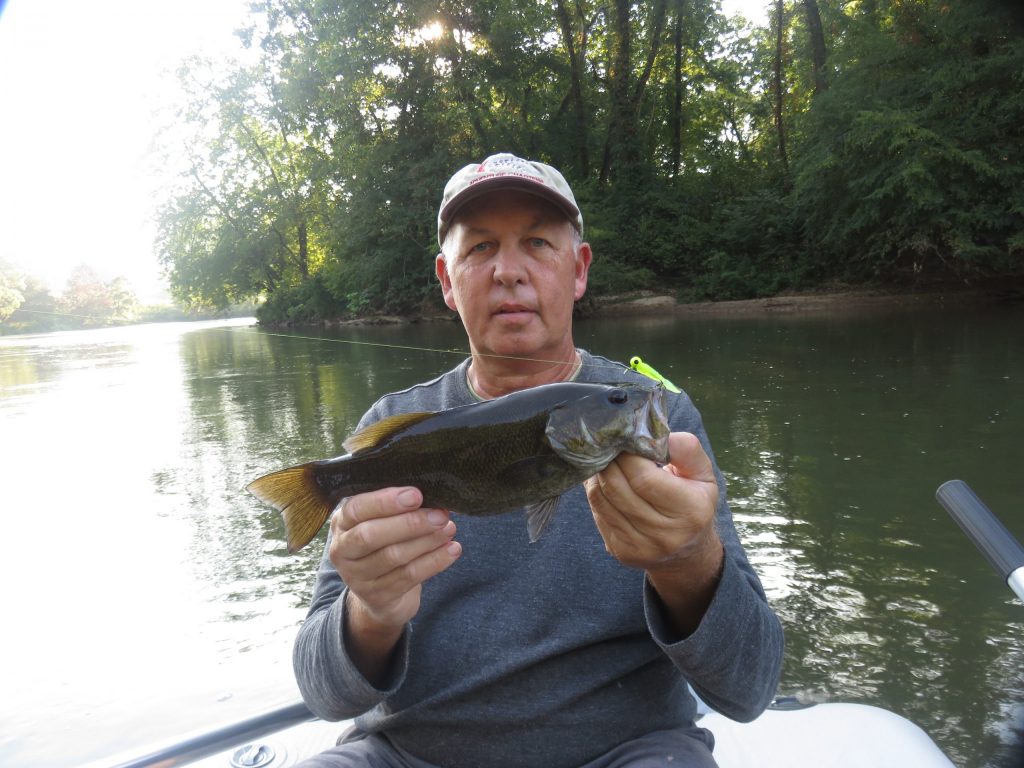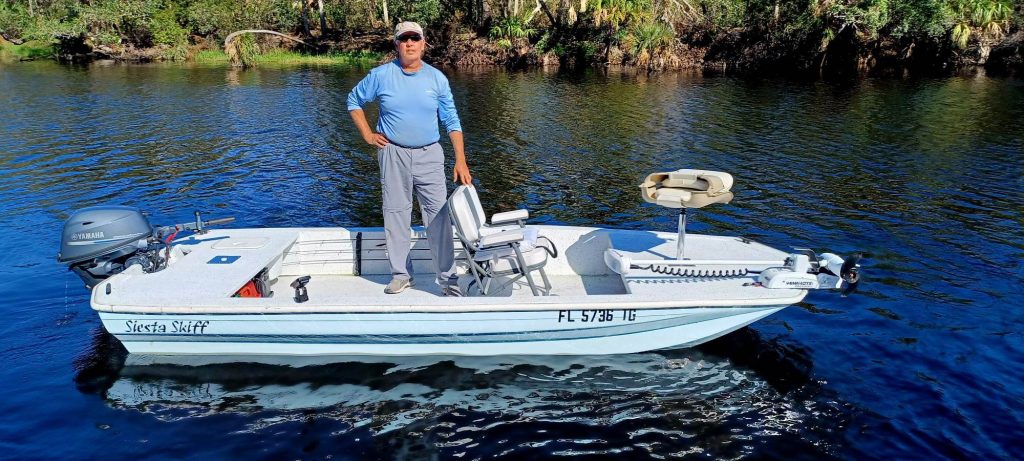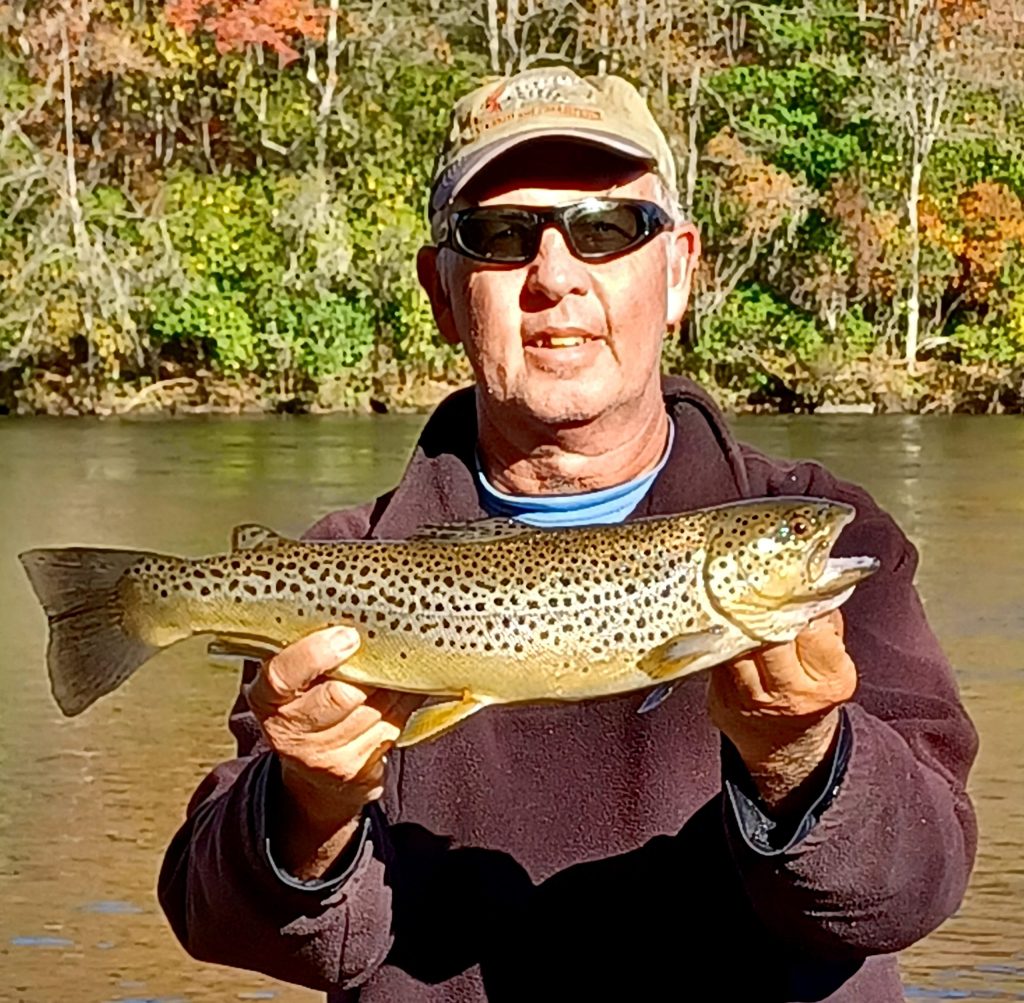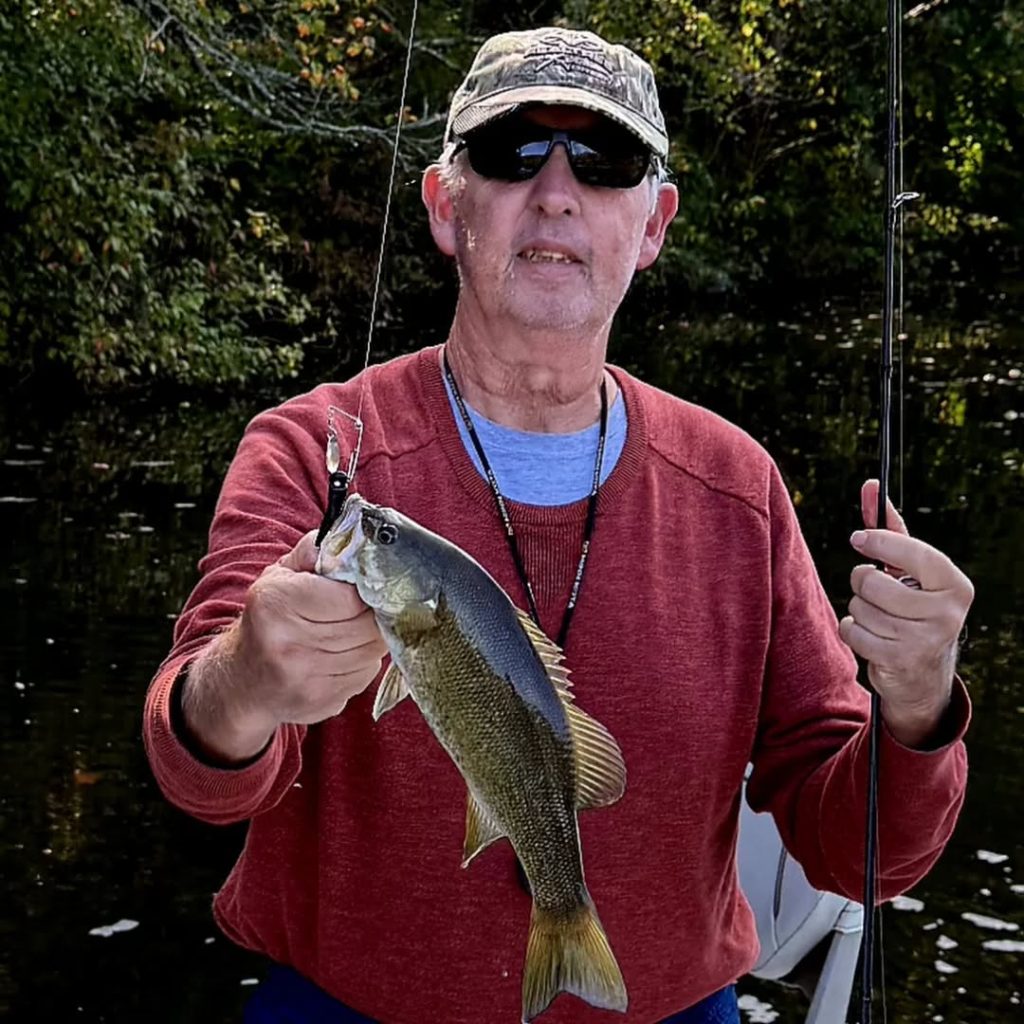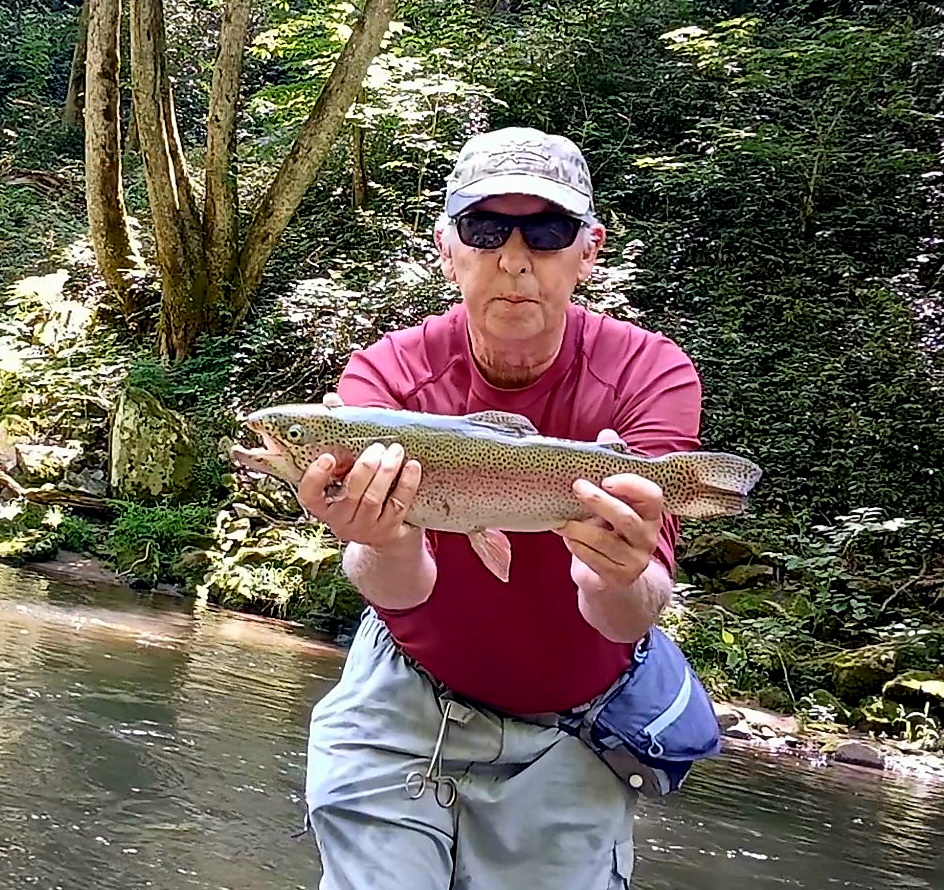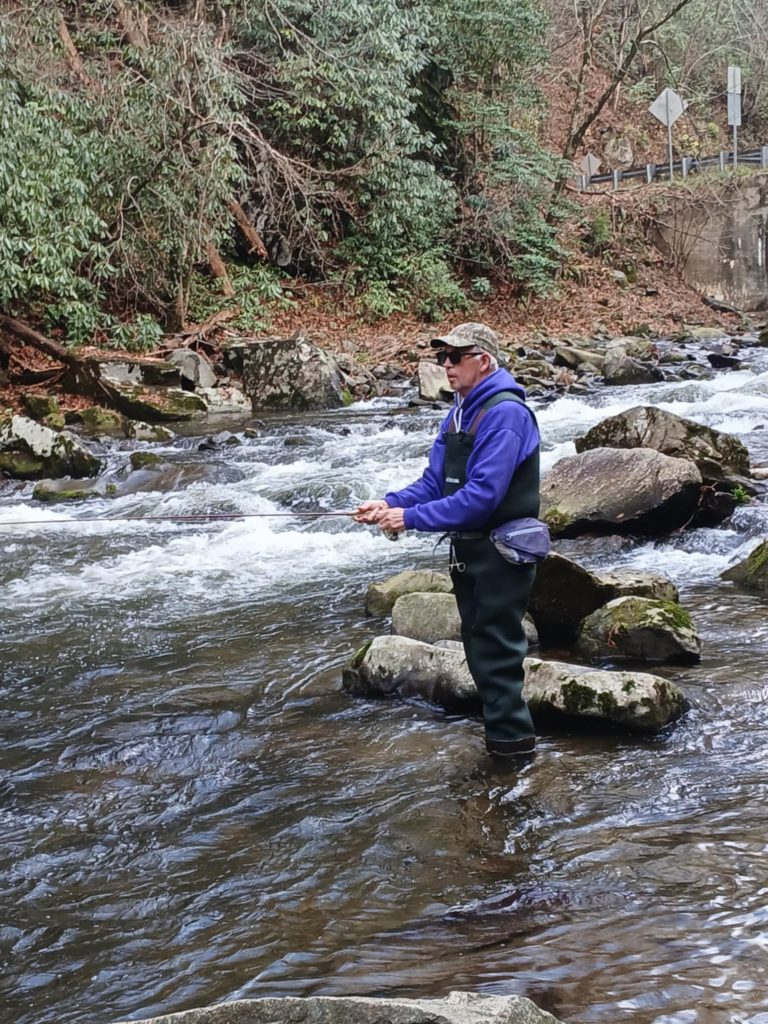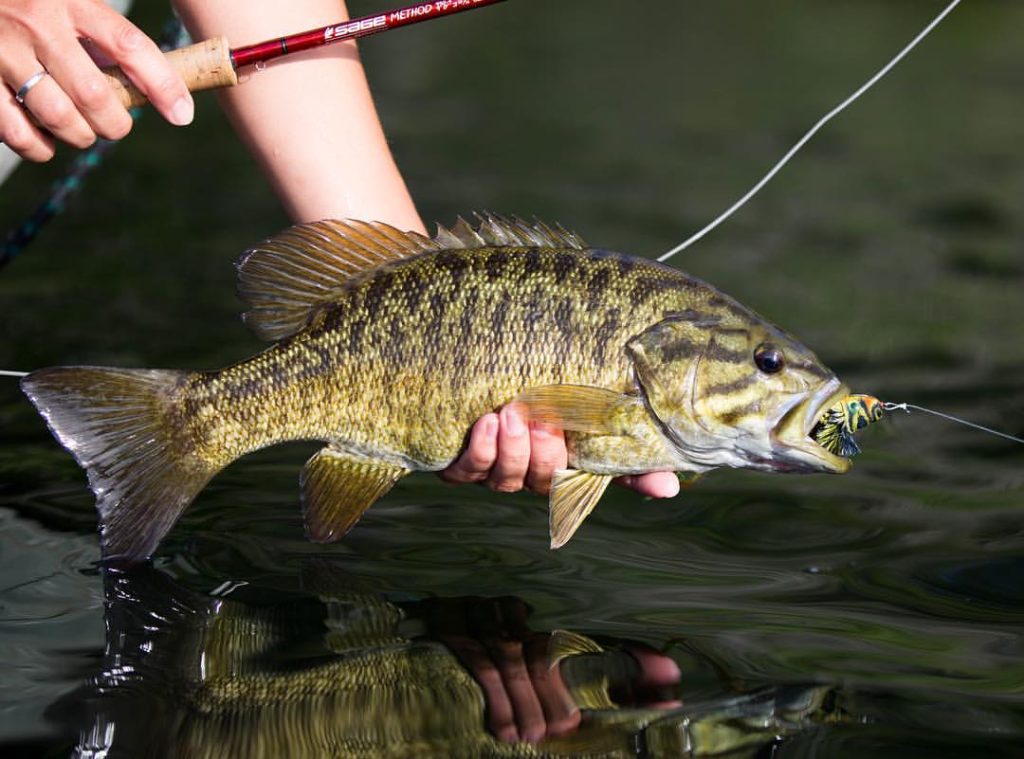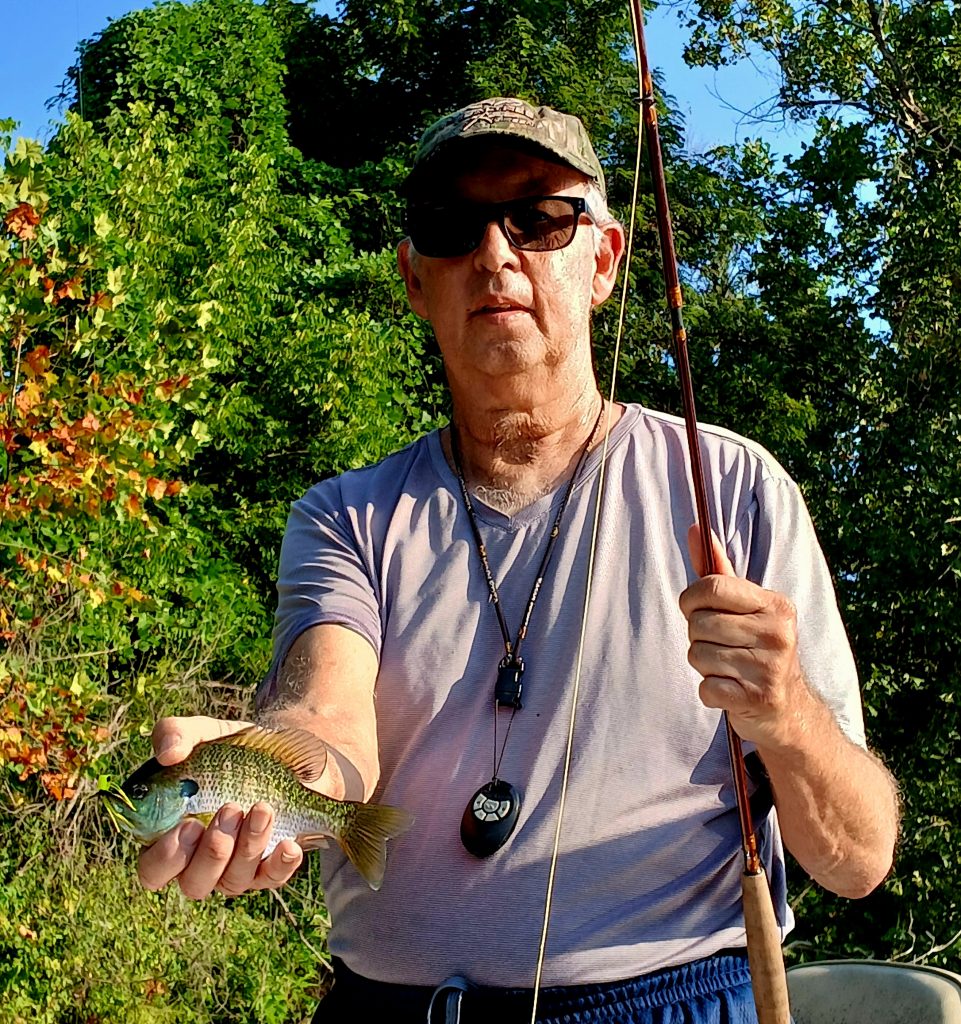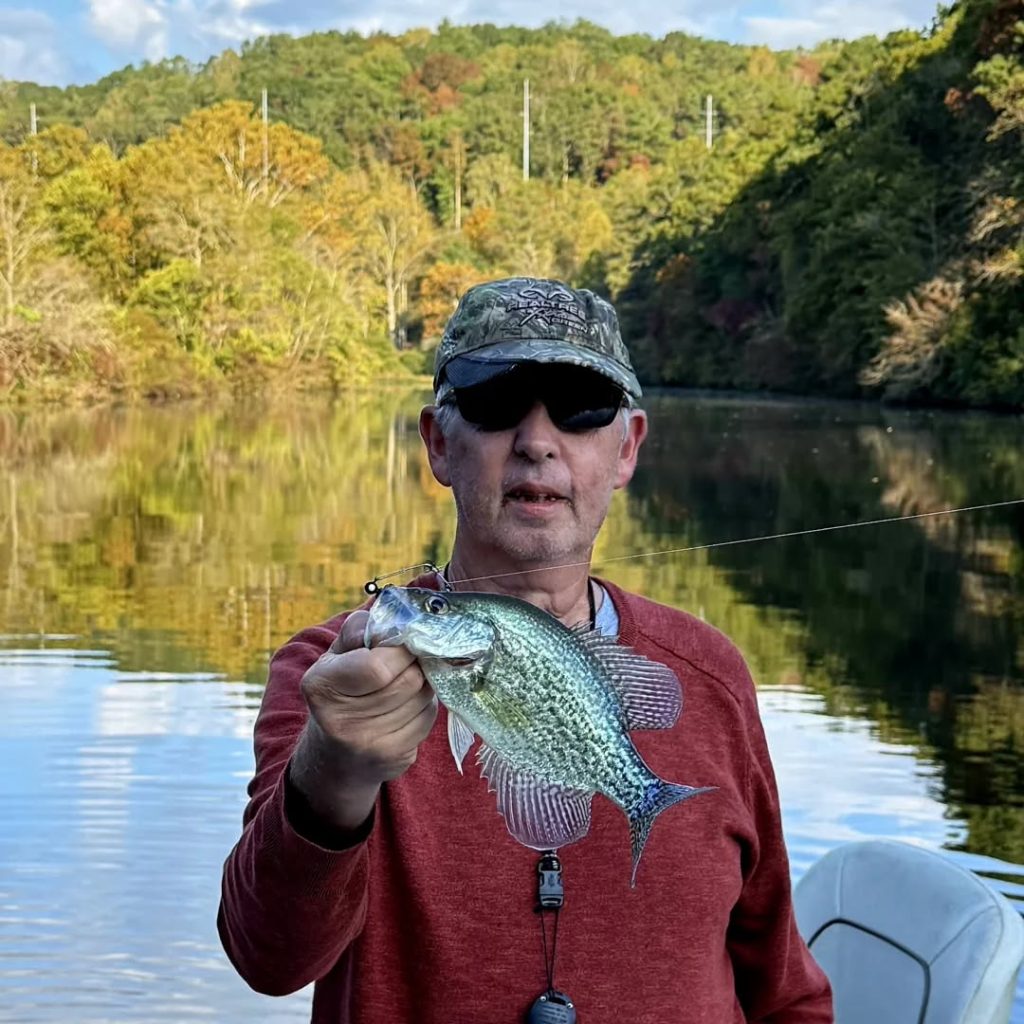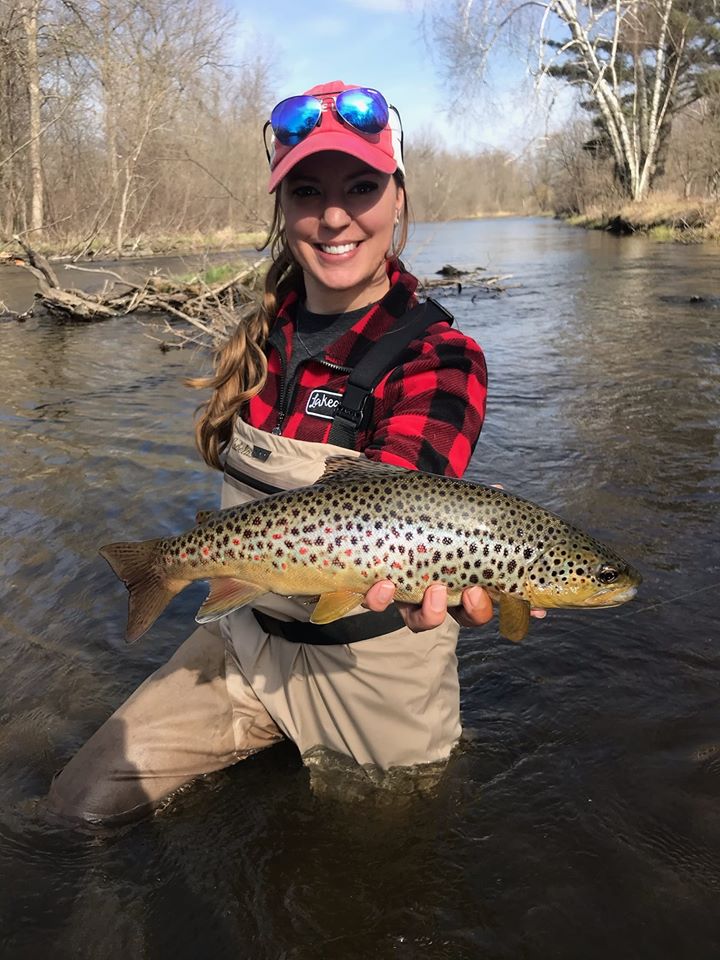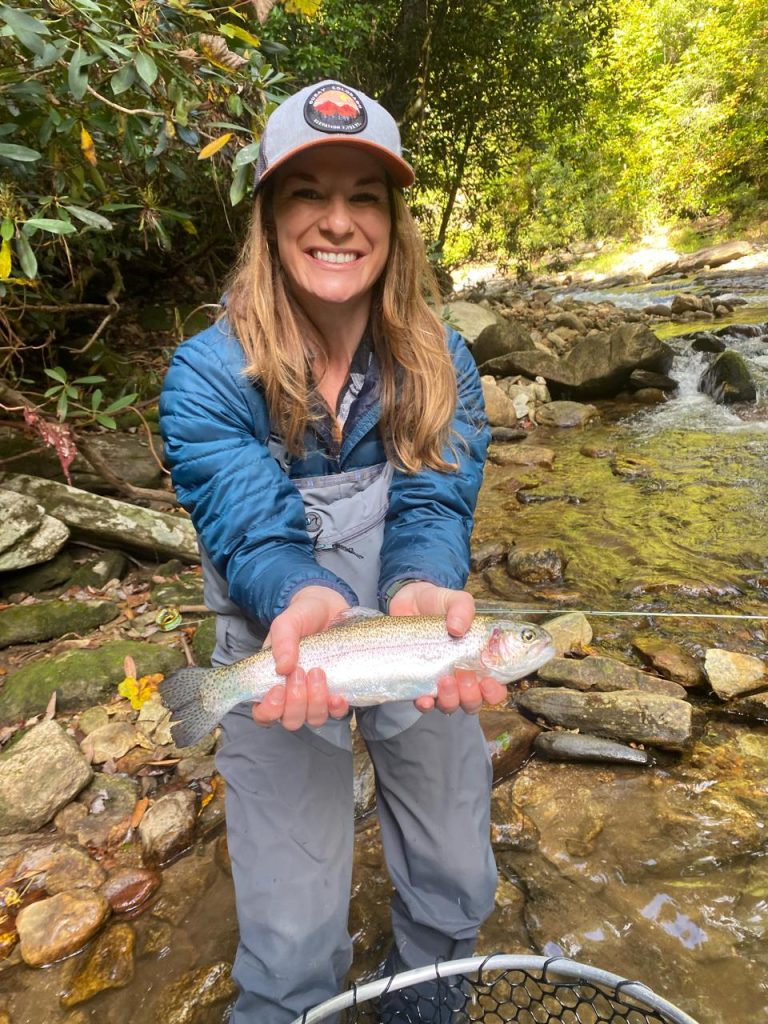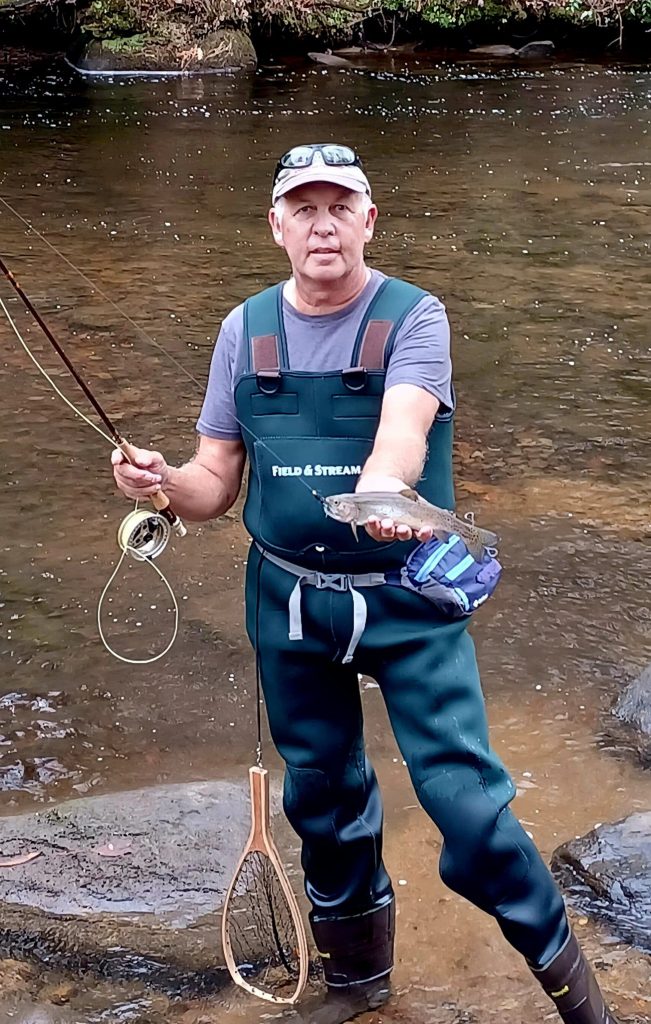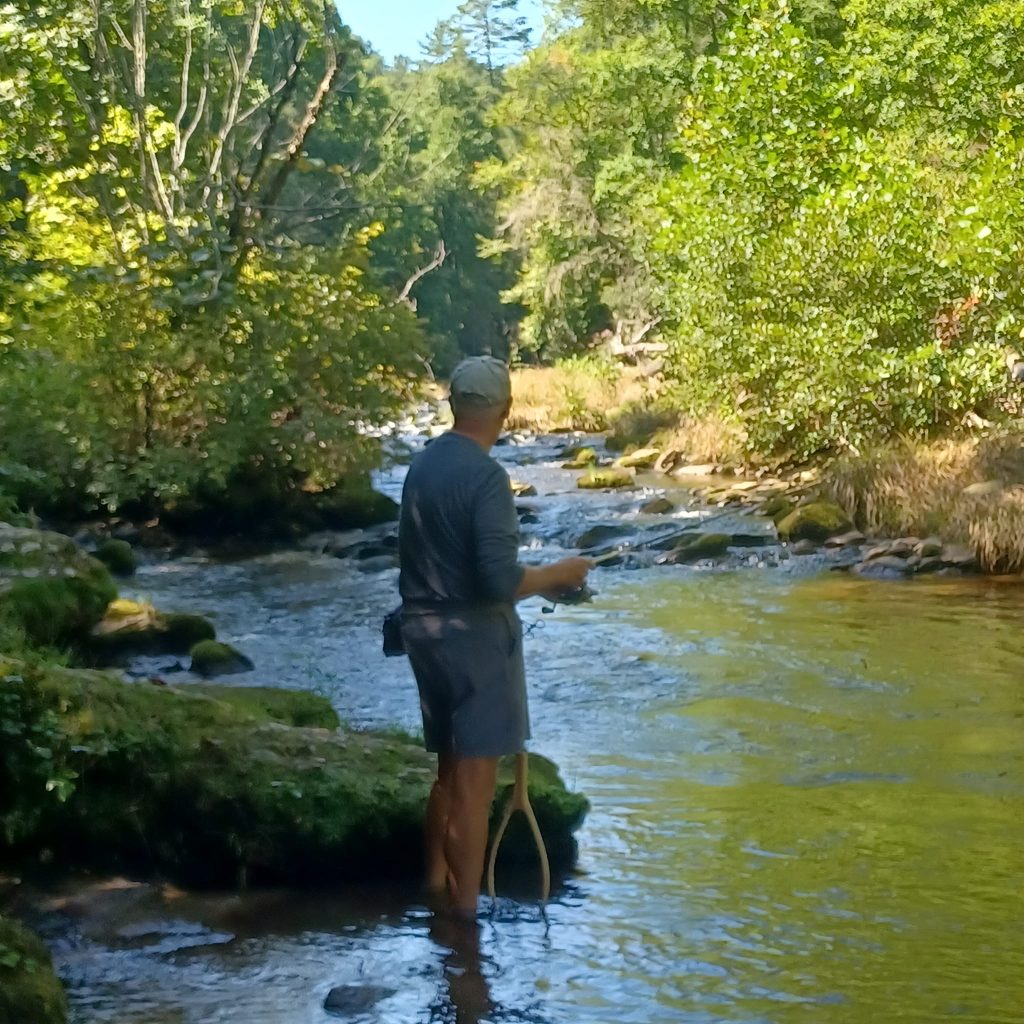Franklin North Carolina fishing guide!
Capt Jim Klopfer is a Franklin North Carolina fishing guide. He was a full time charter captain in Sarasota, Florida for over 30 years. He moved to Franklin in 2018 to pursue freshwater fishing opportunities in the western north Carolina mountains.
Call Capt Jim at (941) 371-1390 or e-mail captjimklopfer@gmail.com
Capt Jim is an experienced and well rounded angler. He offers those visiting the Franklin, North Carolina area a variety of angling options. He takes clients out on wading trips in the various local streams including the Cullasaja River, Cartoogechaye Creek, Burningtown Creek, Nantahala River, Little Tennessee River, and Tuckasegee River.
Capt Jim also has a 2 person raft and a small skiff. He uses the raft for floating the Little Tennessee River for smallmouth bass. He also has a 15′ skiff that is perfect for fishing the local lakes, including Lake Emory, Bear Creek Lake, Cedar Cliff Lake, Nantahala Lake, and Fontana Lake.
Both fly and spin anglers are most welcome! All gear and tackle is provided, though anglers are certainly welcome to bring their own. Anglers fly fishing in Franklin North Carolina will use a 3wt to 5wt for trout and river bass. A 7wt is used when targeting larger bass with a heavier bug. Spin anglers will use ultralight tackle for most of the fishing.
Franklin North Carolina guided fishing trips
Anglers seeking to go out on a guided fishing trip in Franklin, North Carolina have a variety of options. In town itself, anglers can fish the Cullasaja River, Little Tennessee River and Lake Emory, Catoogechaye Creek, and Burningtown Creek. World famous Tuckasegee River and Nantahala River are 30 to 45 minutes away.
One interesting aspect of guided fishing trips in Franklin, North Carolina is the versatility. Early in the season, trout fishing is king. Local waters are well stocked and anglers can expect to catch fish if conditions are good. By late May as it warms up, smallmouth bass become an option. This time of year anglers can wet wade for both trout and bass, Smallmouth and largemouth bass and panfish are the primary targets in summer. As it cools off again, trout become a better option, particularly on the Delayed Harvest waters, which are heavily stocked in October and November.
Smallmouth bass guided fishing trips
Capt Jim really enjoys trout fishing, but he loves fishing for smallmouth bass! They are beautiful and fight very hard. Smallmouth are often times less fussy than trout can be, though by no means a guarantee. Also, most smallmouth bass fishing occurs in the warmer months when it is comfortable to wet wade or get a little wet in the raft.
The best opportunity when fishing for smallmouth bass is to float the Little Tennessee River. There are some fish upriver from the dam in Lake Emory. However, the best fishing is in the flowing stretch of the river from the dam to Fontana Lake. The section from the dam to the 28 bridge is Capt Jim’s favorite stretch. It is not as easily accessed and gets less fishing pressure. He uses a 10′ raft which accommodates himself and 1 client.
Capt Jim caters to both fly and spin anglers. Fly anglers will use a popper quite a bit. If the bass won’t hit on top, a switch to a Clouser Minnow or wooly bugger will usually entice fish. Spin anglers do well with jerk baits, topwater lures, and soft plastic baits.
Bass and panfish fishing trips
Anglers can also catch bass and panfish in Franklin, particularly in the Little Tennessee River. For the most part, Capt Jim targets these species in the summer when it is warm and fishing for other species slows down. Lake Emory is chock full of panfish and this is a great option for kids or for fly anglers looking to practice during the off season. Panfish destroy small poppers early in the morning. Bass hit larger deer hair bugs.
Spin anglers can cast lures and live bait for panfish and bass. I do not use bait often, but I will get worms for kids or inexperienced anglers looking to catch some panfish. Capt Jim will clean a few fish for those looking to take a few fish home for a meal.
Trout fishing guided trips
It is inarguable that trout are king is this part of North Carolina. Anglers come from many destinations to enjoy this type of fishing. Capt Jim offers anglers both fly fishing and spin fishing trips. There are several options depending on conditions. Close to town, Cartoogechaye Creek can provide good action and is convenient and very easily accessed.
Capt Jim’s favorite trout stream in the Nantahala River. It is a 45 minute drive through windy mountain roads. The scenery is spectacular and the fishing often matches it! This is easy wading and fishing, for the most part. This is classic “pocket water” with nice runs and pools between the riffles and rapids. There is excellent access from both Wayah Rd and Old River Rd. Weekdays are best as it does get busy on weekends.
Read more about fishing the Nantahala River
Catoogechaye Creek runs west to east, starting a few miles from Franklin. It is very easily accessed from Parker Meadows Sports Complex in particular. It does not provide a remote feel, but offers good action and is well stocked. It is a great option for anglers who want a nice easy fishing trip close to town.
Read more about fishing Cartoogechaye Creek
The Cullasaja River lies southeast of Franklin, eventually emptying into the Little Tennessee River. There are two sections; the gorge upriver and the flatter section near town. Both are stocked. The upper section has better scenery and the opportunity to catch more wild fish. There are a lot of pulloffs as highway 64 parallels the river. The lower section is a bit more urban feeling, but is convenient and productive.
Read more about fishing the Cullasaja River
Burningtown Creek is another local spot that really does not get a ton of pressure and is well stocked. There are only a few spots to access the stream. It is easily fished and conveniently located. It is a pretty 20 minute drive from Franklin.
Read more about fishing Burningtown Creek
